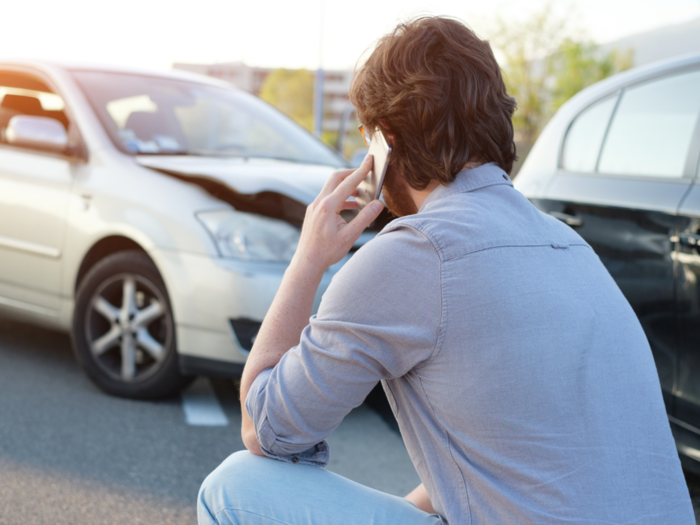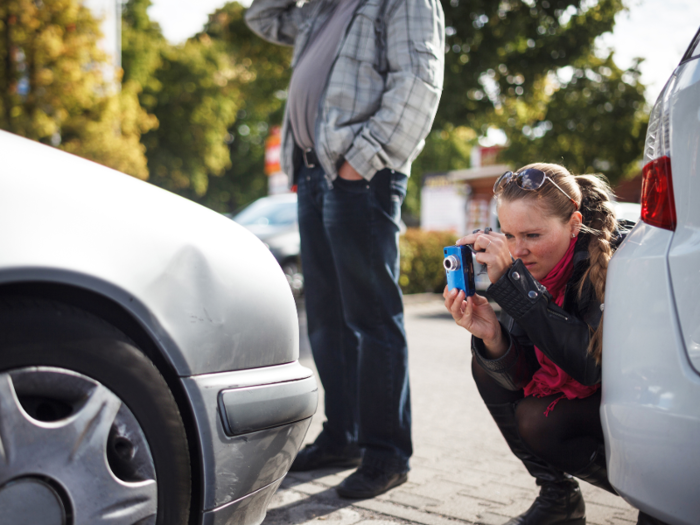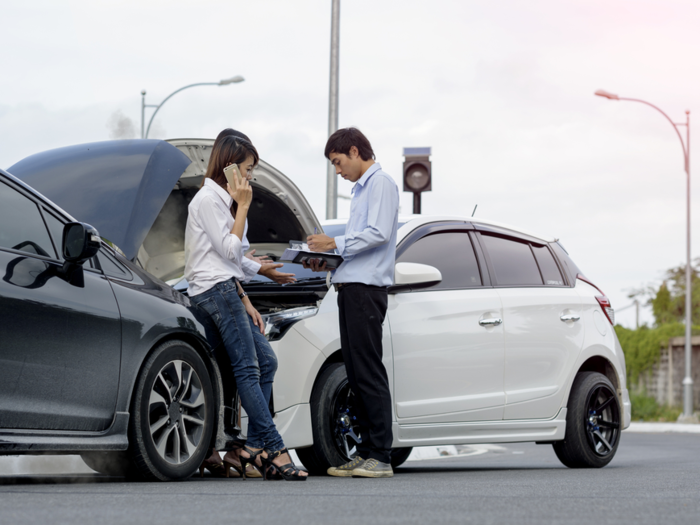- Home
- slideshows
- miscellaneous
- Here's exactly what you should do if you get in a fender bender
Here's exactly what you should do if you get in a fender bender
Orient yourself

Report the accident

Messerly said you're legally obligated to call law enforcement if your accident resulted in more than $500 worth of damage, or if there was any damage to private or city property, such as a fire hydrant, pole, or mailbox.
If there’s any doubt about damage to either vehicle or the surrounding physical area, err on the side of caution and involve the police.
As Messerly explained, regardless of who’s at fault, the objective should be the same: “Minimize liability by documenting facts.”
People who are at fault in fender benders tend to shy away from involving authorities, while those not at fault tend to want a corroborating report.
“The decision will ultimately be made on a case-by-case basis, but it's a common rule of thumb that law-enforcement reports hold more weight — in all regards — than personal testimony," she said.
If there’s damage to be assessed and documented, don’t move either vehicle before this has happened.
Take photos

If it’s safe and feasible to do so, walk around the scene of the accident and take pictures not only of any damage, but of “100 feet around the perimeter of the accident,” Messerly said.
Since it’s “hard to prove anything with basic hearsay," she said pictures can serve to piece together an incident in the event of litigation. If the at-fault party seems to be dragging their feet paying for damages later on, photographic evidence will help, should the case end up in small claims court.
“The same issue presents itself if the ‘victim’ continues to tack on additional charges expecting the ‘at-fault’ party to pay," she said.
The best way to avoid this? As Messerly put it, “Document. Document. Document.”
Exchange information

Regardless of fault, it is important that all parties involved in the fender bender exchange information, Messerly said.
Verify it in real time by calling each other’s numbers, not only to ensure they were recorded properly, but also because "the liable party oftentimes will provide fake information to avoid financial liability," she said.
Be prepared

Accident preparedness is as much a last step as it is a first, really, but it’s only after involvement in a fender bender that you’ll likely be reminded of how best to avoid a similar experience in the future.
This applies both to the items you should keep in your car, and to how you should approach driving as a whole.
Your license and registration should always be on hand in the event you get pulled over, but Messerly also recommends having the following items in your car at all times: a copy of your insurance information, a first aid kit, a blanket (in the event of shock, or adverse weather conditions), water, your phone, and a collision tool (to cut a seat belt or break a window in the event of a more serious accident).
Brushing up on your literal street smarts is also advised, and Messerly recommends that all drivers take a defensive driving course, “not only because it reduces your insurance premiums, but because it will open your eyes to the reality that, as a driver, you are only able to control your immediate surroundings.”
Getting behind the wheel undoubtedly comes with safety risks. Auto accidents range in severity, and the best way to prevent any kind is to take a defensive stance while driving.
This approach helps to encourage safe driving and to avoid fender benders in the first place by keying you into a mindset of being hyper-alert in a situation where it’s easy to be distracted and circumstances can change suddenly.
"Knowing, anticipating, and being prepared for as many variables as possible will help you to prevent accidents rather than handle them once they have occurred," Messerly said.
Popular Right Now
Popular Keywords
Advertisement